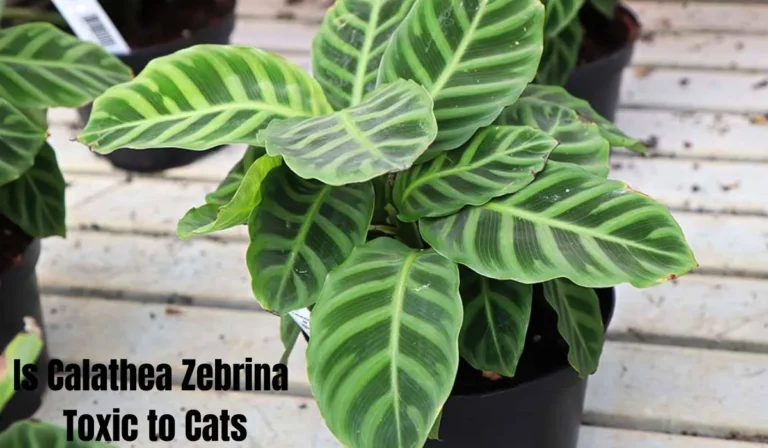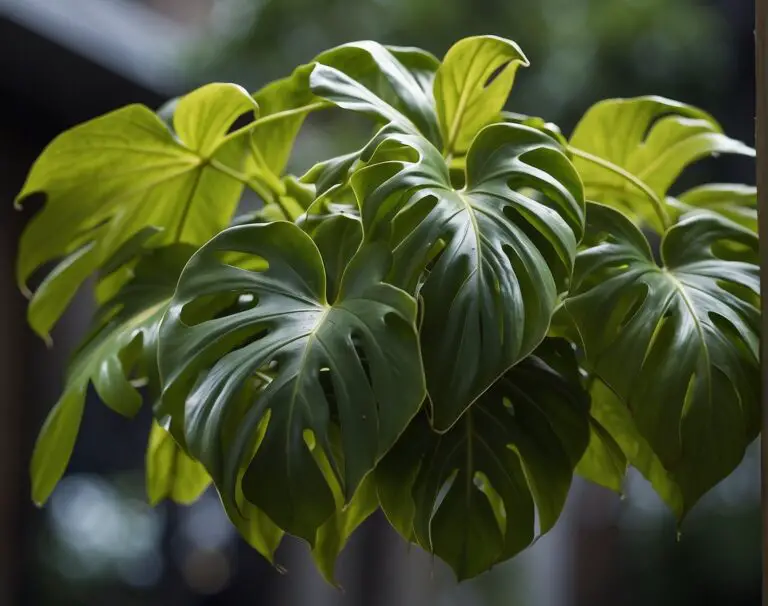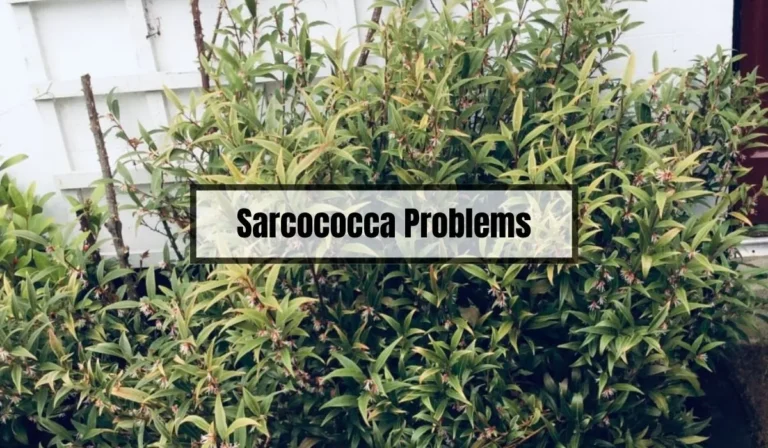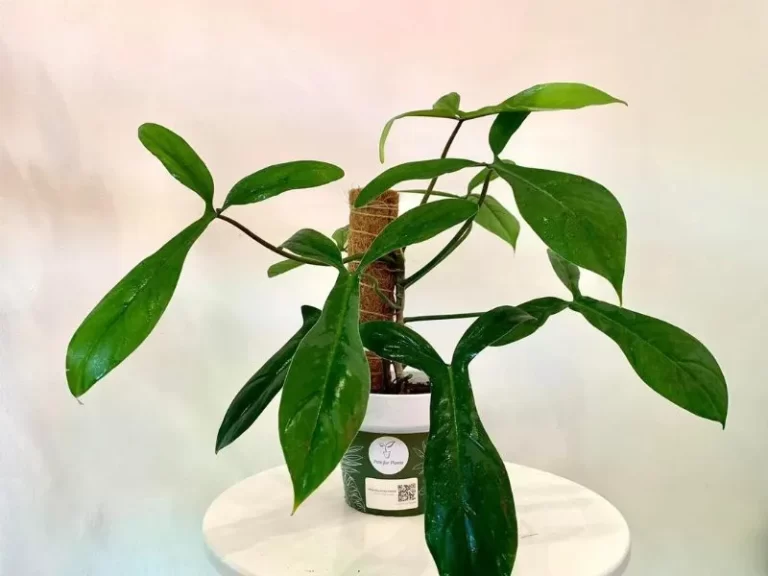Prayer Plant Problems: Common Issues and How to Fix Them
Are you struggling to keep your prayer plant healthy and vibrant? You’re not alone. Prayer plants are a popular choice among houseplant enthusiasts due to their unique foliage and low maintenance requirements.
However, even the most experienced plant owners can encounter issues with their prayer plants. In this article, you will learn about some of the most common prayer plant problems and receive tips on how to address them.

Prayer plants can experience a variety of issues, including yellowing leaves, root rot, and pests. Yellowing leaves can be caused by environmental shock, overwatering, and incorrect lighting.
Root rot can occur when the plant is overwatered, leading to the roots becoming waterlogged and unable to absorb nutrients. Pests such as fungus gnats and thrips can also infest prayer plants, causing damage to the leaves and stems. In the following sections, we will dive into each of these problems in more detail and provide solutions to help revive your prayer plant.
Key Takeaways
- Prayer plants can experience yellowing leaves, root rot, and pests.
- Yellowing leaves can be caused by environmental shock, overwatering, and incorrect lighting.
- To prevent and address prayer plant problems, it’s important to provide the right care, including proper watering, lighting, and pest control.
Prayer Plant Problems
If you are a plant parent, you might have heard of the Prayer Plant, also known as Maranta leuconeura. This tropical plant is a popular choice for indoor gardening because of its unique foliage and low-maintenance nature.
However, like any plant, it is not immune to problems. In this section, we will discuss the common issues that you might encounter when caring for your Prayer Plant and some prevention tips to keep your plant healthy and happy.
Common Issues
Here are some of the most common issues that you might encounter when caring for your Prayer Plant:
| Problem | Possible Causes | Solution |
|---|---|---|
| Yellow leaves | Environmental shock, overwatering, or underwatering | Check the soil moisture regularly and adjust watering accordingly. Also, avoid exposing your plant to direct sunlight or extreme temperatures. |
| Wilting or curling leaves | Underwatering or low humidity | Place a humidifier or pebble tray near your plant. Also, water your plant regularly and keep the soil moist. |
| Brown or crispy leaves | Overwatering, underwatering, or a lack of humidity | Check the soil moisture regularly and adjust watering accordingly. Also, increase the humidity around your plant. |
| Pests and diseases | Spider mites, mealybugs, scale insects, root rot, powdery mildew, and botrytis blight | Keep your plant clean and avoid overwatering. If you notice any signs of pests or diseases, isolate your plant and treat it with an appropriate solution. |
Prevention Tips
Here are some prevention tips to keep your Prayer Plant healthy and happy:
- Watering: Make sure to water your plant regularly, but avoid overwatering. Prayer Plants prefer moist soil but can be sensitive to standing water. Check the soil moisture regularly and adjust watering accordingly.
- Lighting: Prayer Plants prefer bright, indirect light. Avoid exposing your plant to direct sunlight or extreme temperatures.
- Humidity: Prayer Plants prefer high humidity. Consider placing a humidifier or pebble tray near your plant to increase humidity levels. You can also mist your plant regularly.
- Fertilizing: Prayer Plants do not require frequent fertilization. You can fertilize your plant once a month during the growing season with a balanced fertilizer.
- Cleaning: Make sure to keep your plant clean by wiping the leaves with a damp cloth regularly. This can help prevent pests and diseases.
Overall, taking care of your Prayer Plant is not difficult as long as you are aware of the common issues and follow the prevention tips. By doing so, you can enjoy the unique and beautiful foliage of your Prayer Plant for years to come.
Why Is My Prayer Plant Dying?
If you’re noticing your prayer plant isn’t looking its best, there could be a few reasons why. Here are some common causes of a dying prayer plant and what you can do to fix it:
- Overwatering: Prayer plants like to be kept moist, but overwatering can lead to root rot and other fungal diseases, which can be fatal to your plant. Make sure the soil is moist but not soaking wet, and allow the top inch of soil to dry out before watering again. If you’re unsure whether your plant needs watering, stick your finger in the soil – if it feels dry, it’s time to water.
- Underwatering: On the other hand, underwatering can also cause your prayer plant to die. Make sure you’re watering your plant regularly and not letting the soil dry out completely. If the leaves are wilting or curling, it could be a sign your plant needs more water.
- Lack of humidity: Prayer plants like high humidity, so if you live in a dry climate or your home is particularly dry, your plant may suffer. Try misting your plant regularly or placing it on a pebble tray to increase humidity. You can also consider using a humidifier in the room where your plant is located.
- Too much direct sunlight: Prayer plants prefer bright, indirect light. Direct sunlight can scorch their leaves and cause them to die. Make sure your plant is in a spot where it’s getting plenty of light, but not direct sun. If you notice the leaves are turning yellow or brown, it could be a sign that your plant is getting too much sun.
In summary, overwatering, underwatering, lack of humidity, and too much direct sunlight are common causes of a dying prayer plant. By following these tips, you can help revive your plant and keep it healthy and thriving.
How to Revive a Prayer Plant?
If you’ve noticed your prayer plant looking a little sad, there are things you can do to revive it! Here are some tips to help your plant thrive again:
- Check the soil: If your plant is looking wilted or droopy, it could be a sign that it’s not getting enough water. Check the soil to make sure it’s moist but not waterlogged. If it’s too dry, give your plant a good drink of water and make sure to water it regularly going forward. You can also use a moisture probe to help you determine when your plant needs watering.
- Increase humidity: Prayer plants love humidity, so if your plant is looking dry and crispy, it could be a sign that it’s not getting enough humidity. Try misting your plant regularly or placing it on a pebble tray to increase humidity. You can also use a humidifier to create a more humid environment for your plant.
- Trim dead leaves: If your plant has dead or yellowing leaves, it’s important to trim them off to prevent the plant from wasting energy trying to revive them. Use clean, sharp scissors to snip off any dead leaves or stems. Be sure to dispose of the trimmed leaves properly to prevent the spread of disease.
- Repot your plant: If your plant is rootbound or the soil is depleted, it may be time to repot it. Choose a pot that’s slightly larger than the current one and use fresh, well-draining soil. This will give your plant the space and nutrients it needs to grow and thrive.
Remember, prayer plants are sensitive and can take some time to bounce back. Be patient and keep up with regular care to help your plant thrive again. With a little love and attention, your prayer plant will be back to its beautiful self in no time!
Best Care Practices for Prayer Plants
If you’re looking to keep your prayer plant healthy and vibrant, there are a few best care practices to follow. Here are some tips to help you take care of your prayer plant:
Temperature and Humidity
Prayer plants thrive in high humidity and warmer temperatures similar to their native tropical conditions. So, an ideal weather condition is somewhere between 65°F and 85°F at all times, which is luckily similar to temperatures inside. You can also use a humidifier or place a tray of water near your plant to increase humidity.
Soil and Water
Prayer plants do best in soil with excellent drainage. Standard potting soil mix works well, but soil mixes high in water-retentive sphagnum moss can be improved by adding perlite. Mix one-quarter perlite with three-quarters potting soil.
When watering your prayer plant, make sure to water it when the top inch of soil feels dry to the touch. Overwatering can lead to root rot, so be careful not to let your plant sit in standing water.
Lighting
Prayer plants prefer bright, indirect light. Direct sunlight can scorch their leaves, while too little light can cause them to become leggy and lose their vibrant colors. Place your prayer plant near a window with filtered light or use a sheer curtain to diffuse direct sunlight.
Fertilizer
Prayer plants don’t need a lot of fertilizer, but you can give them a boost during the growing season (spring and summer) with a balanced, water-soluble fertilizer. Follow the instructions on the package for the correct amount and frequency of application.
Pruning
Prayer plants can become leggy and lose their shape over time. Prune them back to encourage bushier growth and to remove any yellow or brown leaves. Use clean, sharp scissors to make a clean cut just above a leaf node.
Pests and Diseases
Prayer plants can be susceptible to pests like spider mites and mealybugs. Keep an eye out for any signs of infestation, such as webbing or sticky residue on the leaves. If you do notice pests, isolate your plant and treat it with an insecticidal soap or neem oil.
Additionally, prayer plants can suffer from root rot or diseases like botrytis blight and powdery mildew. Make sure to provide proper care to prevent these issues.
In summary, to keep your prayer plant healthy and vibrant, you need to pay attention to its temperature, humidity, soil, water, lighting, fertilizer, pruning, and pests and diseases.
By following these best care practices, you can keep your prayer plant healthy and vibrant for years to come. Remember to pay attention to your plant’s needs and adjust your care routine accordingly.
Frequently Asked Questions (FAQs)
Why are my prayer plant leaves turning yellow and brown?
Yellow and brown leaves on your prayer plant can be a sign of several issues. One possibility is that your plant is getting too much direct sunlight. Prayer plants prefer indirect, filtered light, so consider moving your plant to a shadier spot. Another possibility is that your plant is not getting enough water. Make sure the soil is moist, but not waterlogged. Finally, yellow and brown leaves can be a sign of pests or disease. Check your plant for any signs of infestation or infection.
What can I do to fix my sick prayer plant?
If your prayer plant is sick, the first step is to identify the problem. Is it getting too much or too little water? Is it getting enough light? Is it being attacked by pests? Once you have identified the issue, take steps to correct it. For example, if your plant is overwatered, let the soil dry out before watering it again. If your plant is infested with pests, try using an organic insecticide to get rid of them.
How do I revive a prayer plant that has been overwatered?
If your prayer plant has been overwatered, the first step is to stop watering it. Let the soil dry out completely before watering it again. You can also try repotting your plant in fresh, well-draining soil. Make sure to remove any dead or rotting roots before repotting.
What are some common pests that can affect prayer plants?
There are several pests that can attack prayer plants, including spider mites, mealybugs, and scale insects. Spider mites are tiny, spider-like creatures that can suck the sap out of your plant, causing it to wilt and die. Mealybugs are small, white, cottony insects that can also suck the sap out of your plant. Scale insects are small, hard-shelled insects that can attach themselves to the leaves and stems of your plant.
Should I cut off yellow leaves from my prayer plant?
Yes, you should cut off yellow leaves from your prayer plant. Yellow leaves are a sign that something is wrong with your plant, and cutting them off can help prevent the problem from spreading. Use a clean pair of scissors to cut the leaf as close to the stem as possible.
What are the signs of an unhealthy prayer plant?
There are several signs that your prayer plant is unhealthy, including yellow or brown leaves, wilting, drooping, and stunted growth. You may also notice that your plant is not producing new leaves or that the leaves it does produce are smaller than usual. If you notice any of these signs, take steps to identify and correct the problem as soon as possible.
Remember, taking care of your prayer plant is all about paying attention to its needs and providing it with the right environment. By following these tips and taking good care of your plant, you can keep it healthy and thriving for years to come.
Conclusion
So, there you have it, a comprehensive guide to common prayer plant problems and their solutions. Remember, prayer plants are a beautiful addition to any indoor garden, but they do require some special care to thrive.
If you notice your prayer plant is struggling, don’t panic. Check the soil moisture, lighting conditions, and humidity levels. Remember that prayer plants prefer moist but well-draining soil, indirect light, and high humidity.
If you’re struggling to keep your prayer plant healthy, consider investing in a humidifier or placing a tray of water near the plant to increase humidity levels. Additionally, make sure you’re not over or under-watering your plant and that it’s not getting too much or too little light.
Finally, keep an eye out for pests and diseases. If you notice any signs of infestation or disease, take action immediately to prevent the problem from spreading.
With a little attention and care, your prayer plant can thrive and continue to add beauty and life to your indoor space.






